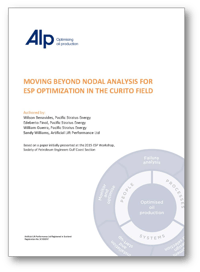 Optimization of production, run life increase, and minimization of downtime results in the lowest $/bbl. cost of production, which is the goal for any operator using ESPs. This paper will present the results of a 2-month pilot program to optimize ESPs, using real-time data from a SCADA system and PI historian (called SIGO), pushed real-time to an ESP analysis engine (Pump Checker), which provided automated ESP analysis for every new well test.
Optimization of production, run life increase, and minimization of downtime results in the lowest $/bbl. cost of production, which is the goal for any operator using ESPs. This paper will present the results of a 2-month pilot program to optimize ESPs, using real-time data from a SCADA system and PI historian (called SIGO), pushed real-time to an ESP analysis engine (Pump Checker), which provided automated ESP analysis for every new well test.
The ESP analysis application diagnoses degradation in the ESP due to effects such as wear, deposition, plugging, spinning diffusers or even wrong pump rotation. As well as quantifying the amount of pump degradation, the software determines the amount of lost production (gross and net) and validates well IPR.
Pacific Stratus Energy (PSE) views the results of such analysis in a data room, called the “WOW” room, where well and ESP performance can be monitored 24 hours per day. Initially, this project was implemented for a small well population of 3 wells in the Curito field.
This paper will present the results of what was determined to be a very successful project, which has now been implemented across more PSE wells in the Yenac, Mantis, Corcel, Guatiquia, and Curito fields. The use of an ESP analysis engine across more PSE wells has had a very positive impact on proactively managing a large quantity of ESPs, resulting in the identification of production increase opportunities, early recognition of lost production, and the ability to make changes to regain production.
.jpg?width=2097&height=770&name=ALP%20logo%20%26%20strapline%20-%20RGB%20(US%20version).jpg)